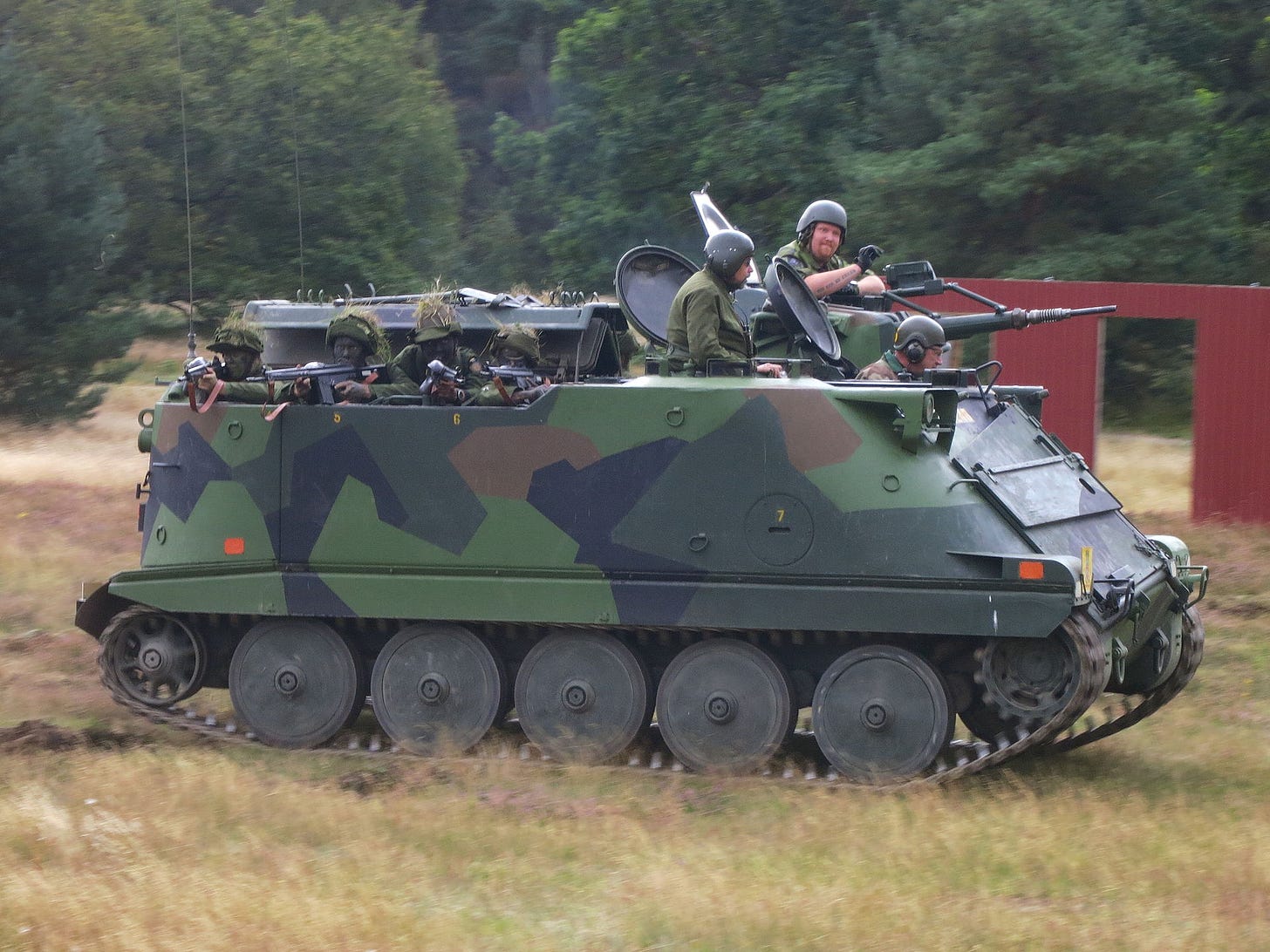
Between 1966 and 2014, Sweden used the Pansarbandvagn 302 (PBV 302) as their highly mobile, tracked infantry fighting vehicle.
Pansarbandvagn directly translates to "armor track wagon."
…
Keep reading with a 7-day free trial
Subscribe to Eyes Only by Wes O'Donnell to keep reading this post and get 7 days of free access to the full post archives.




